About the Writer:
Janice Astbury
Janice Astbury is a Research Associate at the University of Sheffield where she is working on the Breathing Infrastructures project undertaking action research related to green infrastructure, air quality, wellbeing and connecting schools with urban nature in Buenos Aires.
Janice Astbury
I believe that urban environmental education is something new precisely because it involves all of the things mentioned in the question posed. Environmental education (EE) has traditionally focused on either nature education or sustainability education. The focus in the former has tended to be on nature ‘out there’ with which a distant or passive relationship is often presumed and sometimes prescribed (given that humans are seen as playing a primarily destructive role). Sustainability education, which has dominated EE in recent years, has combined information about global environmental challenges with encouragement of practices aimed at reducing our impact. While it is important to develop this sort of awareness and capacity, young people often describe feelings of fear and powerlessness leading to despair and denial. This seems to be a reaction to being asked to make seemingly shallow gestures in the face of planetary crisis.
Urban environmental education is emerging as a distinctly different approach. It is about learners doing transformative things in their own habitats and learning through practice. First hand experience has been shown to be particularly conducive to learning and this has led to a growing interest in place-based education. As more and more of us dwell in cities, our ‘place’ is increasingly urban, i.e. within human dominated ecosystems (which are more appropriately viewed as ‘social-ecological systems’). Many of these are characterized by ecological disturbance and face growing challenges in sustaining human livelihoods.
In this context, what we need to learn is how to restore ecosystem functioning in support of human health and wellbeing. This involves not so much conserving and protecting nature but rather collaborating with nature. Here humans play a role in cultivating ecosystem functions and services, thus contributing to development and maintenance of green infrastructure, which is good for people and nature. Given that our urban habitats are characterized by complexity and change, it is important that communities as a whole act and learn together, and that the role of young people is emphasized. The latter will be increasingly called upon to create new and adaptive livelihoods for themselves
The goal of urban environmental education should be to develop a systems perspective, adaptive capacity and social capital. This because in order to live well together on this planet, we need a deep understanding of the workings of the social-ecological systems of which we are a part; we need a broad range of skills and a willingness to continually learn and change our perspectives and approaches; and we need relationships with other members of our communities in order to support one another and to effect meaningful change. It is a form of education that is grounded in place, that occurs largely through the process of collective action, and that produces positive social-ecological transformations, which in turn empower participants, inspire hope and engage others.
One of the challenges that this sort of educational practice throws up is that it is completely at odds with the dominant narrative about what education looks like — it has no relation to classrooms or timetables or tests. It is not the sort of educating that most formal educators have been trained to do and it sets off health and safety alarm bells for institutions charged with educating young people. As a result, the pathway toward broad implementation of effective urban environmental education remains elusive. It probably involves some combination of teachers and schools with experimental tendencies, collaborative efforts involving a wide range of community organizations, and encouragement and support for citizen-led, including youth-led, initiatives.
I would be particularly interested in a discussion about the elements of an implementation strategy — and proposals for how to proceed!
About the Writer:
Chankook Kim
Chankook KIM is an assistant professor in the department of environmental education at Korea National University of Education.
Chankook Kim
In Korea, the term “urban” environmental education is not popularly used among either academic researchers or environmental educators, although there are many of environmental programs in urban areas. As the word ‘green’ has different meanings to those who live in urban areas and in rural areas, ‘urban’ may have special meaning to urbanites or environmental educators. If there are any features of urban environmental education in Korea, it is not because such practices of environmental education are implemented in geographically urban areas but because at least the practices have special meaning to those who are urban citizens in the context of their daily lives.
After rapid urbanization and industrialization of past decades, citizens in the urban areas of Korea became more interested in quality of life with green spaces since 1990s. Along with such demand for green spaces, there have been two seemingly different approaches in environmental education. From early 1990s, a group of Korean environmental educators have made their efforts to bring students to wilderness and provide learning opportunities in the nature. From late 1990s, the other group of environmental educators with different perspectives on the environment and environmental education started to focus on the context of daily lives of learners. They rather considered small patches of green spaces in urban areas and made efforts to restore such green spaces if possible.
As environmental educators, we could bring students to wilderness areas for watching migratory birds or to encourage young citizens in urban areas to monitor nests of Korean magpie, one of sedentary birds in their neighborhoods. The former approach is based on views of nature as a place apart from the environment where most urban citizens live, while the latter is environmental education based on views of environment as the place where we live, where we work, where we play, and where we learn.
As an example of the whole-school approach, the School Forest project is closely related to the desire to expand green spaces and ways of environmental education in urban areas. A school community in the project transforms barren school grounds into environmentally friendly forests or garden areas. With more than 700 schools participated as model schools since 1999, the project has started with a central question of how children living in cities enjoy nature and forests in their daily lives.
If there are any other features of urban environmental education in Korea, they may be related to efforts to expand the borders of environmental education with resources of “cities” such as human capital and information technology. Recently a group of high school students in Korea have developed information boards on plants in a small-sized urban park for their project-based learning. The information boards were equipped with quick response codes or near field communication tags. Thus, any citizen who wants further information on the place can easily get it using their iPhone or smartphones. In Korea, there are many examples of environmental education which utilized well-developed IT systems in the country such as high speed internet systems and social networking systems to make the urban areas more desirable and greener.
In sum, the features of “urban” environmental education in Korea is closely related to such practices in environmental education to foster citizens who understand the context of their daily lives and who lead change in their lives utilizing and cultivating diverse resources. Urban environmental education needs to develop competencies of citizens while fostering positive functions of the urban environment.
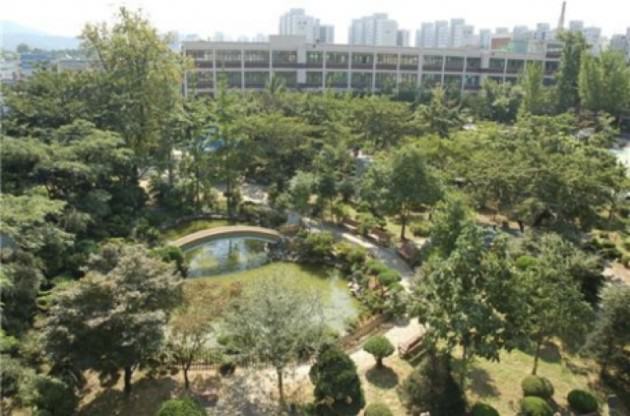
About the Writer:
Marianne Krasny
Marianne Krasny is professor in the Department of Natural Resources and Director of the Civic Ecology Lab at Cornell University, and leader of EPA’s national environmental education training program (“EECapacity”).
Marianne Krasny
Rocking the Boat, a non-profit organization in the Bronx (New York City), exemplifies urban environmental education. The organization has six goals — five of which have to do with youth and community development — things like helping young people feel respected and cared for, become aware of future opportunities, set and achieve goals, and make positive contributions to their community. The sixth goal is about the environment — “Introducing South Bronx community members of all ages to their local natural environment and providing opportunities to enjoy its waters aboard the organization’s fleet of student-built wooden boats and to actively contribute to its restoration and preservation.”
Like Rocking the Boat, other urban non-profits that the Cornell Civic Ecology Lab Education and Learning initiative has worked with often state their goal as youth and community development. The environmental activities — whether sampling water quality, restoring oyster populations, pruning street trees, or community gardening — are a means toward the youth and community development ends. Yet, as demonstrated by the research of Alex Kudryavtsev (also a contributor to this panel), participants in these programs do learn about the ecology of the place where they live and work — for example, they learn about egrets and beavers along the Bronx River, and about the very existence of the Bronx River itself.
By using environmental activities to realize youth and community goals, programs at places like Rocking the Boat, East New York Farms!, or township schools in South Africa simultaneously address community and environmental issues. How such programs achieve this near seamless integration of the social and ecological is one thing youth and community development and education professionals can learn from urban environmental education programs.
But there’s more. Urban environmental education often takes place in stressed communities — neighborhoods experiencing disinvestment, poverty, crime, contaminated soils and water, and lack of green space. Yet despite facing multiple stresses, programs such as Rocking the Boat see potential in small plots of land or stretches of water — so-called urban “sustainability fallows.” And by converting paved over lots into artificial wetlands, or transforming barren median strips into tree lined walkways, these programs realize “fallows” as assets. Importantly, professionals working in urban environmental education also help young people deal with loss — sometimes profound loss such as the death of a sibling or friend, or loss of a valued community green space. The ability to help people deal with loss, transform eyesores into assets, work in communities facing multiple stresses, and integrate community and environmental issues are all ways in which urban environmental education can contribute to the suite of non-profit, government, and private efforts needed to address ongoing issues of environmental degradation and disinvestment. Such capacity is also critical as we face larger issues of climate change.
Some folks may feel that programs that have youth and community development as their primary goal are not environmental education. Yet they truly contribute to environmental learning while simultaneously empowering youth and communities. In this way, urban environmental education reflects contemporary integrated social-ecological systems thinking of scholars and practitioners alike, and offers important lessons for the future of environmental education.
References and further reading
http://www.rockingtheboat.org/
http://www.eastnewyorkfarms.org/
DELIA, J. E. 2013. Cultivating a Culture of Authentic Care in Urban Environmental Education: Narratives from Youth Interns at East New York Farms! MS, Cornell University.
KRASNY, M. E., LUNDHOLM, C., LEE, E., SHAVA, S. & KOBORI, H. 2013. Urban landscapes as learning arenas for sustainable management of biodiversity and ecosystem services. In: ELMQVIST, T., FRAGKIAS, M., GOODNESS, J., GÜNERALP, B., MARCOTULLIO, P. J., MCDONALD, R. I., PARNELL, S., SENDSTAD, M., SCHEWENIUS, M., SETO, K. C. & WILKINSON, C. (eds.) Urbanization, Biodiversity and Ecosystem Services: Challenges and Opportunities. New York City, NY, USA: Springer.
KUDRYAVTSEV, A. 2013. Urban Environmental Education and Sense of Place. PhD, Cornell University.
LIDDICOAT, K. R., SIMON, J. W., KRASNY, M. E. & TIDBALL, K. G. 2007. Sharing programs across cultures: Lessons learned from Garden Mosaics in South Africa. Children, Youth and Environments, 17. http://www.colorado.edu/journals/cye/17_4/index.htm
ODERMATT, A. & BRUNDIERS, K. 2007. Places of sustainability in cities: an outdoor-teaching approach. In: REINFRIED, S., SCHLEICHER, Y. & REMPFLER, A. (eds.) Geographical Views on Education for Sustainable Development. Lucerne, Switzerland: International Geographical Union Commission on Geographical Education.
About the Writer:
Alex Russ
Alex Kudryavtsev (pen name: Alex Russ) is an online course instructor for EECapacity, an EPA-funded environment educator training project led by Cornell University and NAAEE.
Alex Kudryavtsev
Urban environmental education is a varied subfield of environmental education. Urban environmental education programs focus, for example, on community environmental leadership, positive youth development, preserving urban wilderness, urban environmental restoration, green infrastructure, sustainable urban planning, green jobs, environmental art, urban agriculture, and environmental justice. Despite the diversity of such programs, most of them contribute to both environmental integrity and human well-being in cities.
Cities are evolving ecosystems, and we still learn how to manage them for desired ecological and social outcomes. Urban environmental education, which can be viewed as part of the larger system of environmental governance, helps us perform this task. This task is tough because cities are incredibly complex: they are engines of innovations, producers of pollution, sources of prosperity, consumers of natural resources, and labs for solutions of environmental problems. Cities have to develop mechanisms for long-term sustainability, which depends on human creativity, communities’ adaptive capacity, our understanding of biophysical and social systems, human and social capital, and our participation in urban planning and environmental stewardship. These are some characteristics of cities that urban environmental education programs are trying to enhance through different educational approaches.
Last week, on my road trip around the United States, I have visited four different urban environmental education programs in Milwaukee, Wisconsin. For example, at the Schlitz Audubon Nature Center educators use birds and outdoor play to promote environmental literacy and comfort in outdoor settings among youth children and families. In a community food systems organization called Growing Power, one of their programs involves high-school students in internships that provide experiences with green houses, aquaponics, beekeeping, urban livestock, rain catchment, and other features that educate students from underserved neighborhoods about food choices and production. The Urban Ecology Center at Riverside Park, Milwaukee, features a green building, solar power station, public art, urban wasteland being transformed into park, riparian habitats, classrooms and a climbing wall, all of which are intended to improve visitors’ environmental experiences, knowledge, and behavior. In a high school called Escuela Verde, educators work with urban students from diverse backgrounds using student-led and place-based education such as boatbuilding, environmental filmmaking, cultural preservation, promoting healthy commons, learning multiple perspectives, and developing a sense of place. Educators who I met in these programs have shared how they think their programs influence young kids, students, families, ecosystems, and neighborhoods.
These and other urban environmental education programs differ a lot in their educational approaches, audiences, settings, and specific outcomes they are trying to achieve. But we still can call them “urban environmental education” because these programs are trying to improve the urban environment, including people, communities, and ecosystems — often by collaborating with community members, families, urban planners, scientists, and environmental organizations.
Using the term “urban environmental education” also conveys our excitement about cities as potentially sustainable ecosystems, and opens up a conversation about different ways to contribute to improving cities through education for people and the environment.
About the Writer:
Miguel Luna
Miguel Luna is native of Colombia, an avid reader and longtime advocate of community playing an active role in city, state and nationwide policies. An urban resident of Los Angeles for 25 years, he’s been commuting mostly on bike and public transportation after giving up his car in 2005.
Miguel Luna
Words like watersheds, climate change, and sustainability are part of lessons and quizzes in our classrooms today. Some charter schools have even made the environment and sustainability the focus of their studies. The Law has even stepped in to ensure that all children in our state (California) have a chance at being exposed to environmental curricula. In 2003, a California legislator authored legislation that required the state to develop an environment-based Kindergarten through 12-grade curriculum to all California public schools, The Education and the Environment Initiative (EEI) Curriculum. However, while some schools have had success in implementing this curriculum, many struggle to incorporate the lesson plans. Standardized testing under the No Child Left Behind Act, a system that determines how much federal funding a school gets based on test scores, makes high-score-testing the priority leaving very little time and incentive for teachers to supplement or add anything new to the norm established curriculum.
My respect goes out to those wonderful educators in the system that take on the challenge and find creative ways to incorporate environmental learning in the classroom. But nature lessons must also be approached from outside the school system, absent of objectives, standards, and a letter grade. These lessons must be advanced through life experiences. Our local communities represent an opportunity to provide our youth with such learning experiences and nature portals that will create a shift in the way we perceive conservation and appreciate nature.
City planning can play a very important role in exposing our children to nature. By addressing access to nature from a city planning lens, we can also make our communities the classroom. Our cities are transforming, and before us is an opportunity to shape the way our children see their city and interact with it. If a child grows up walking on a sidewalk that uses parkway swales to capture water when it rains rather than having to jump over flooded streets on their way to school, they grow up appreciating stormwater and not seeing it as a nuisance. A simple walk to the grocery store can become a learning experience by exposing a child to hummingbirds suckling on salvias and bees and butterflies interacting with CA poppy’s and coyotebush (plants native to our local region).
We can design our sidewalks to have destinations. Our front doors can lead us to local parks and these can link with each other via green routes. We can utilize our local parks as portals for children and their parents to be shuttled, as a family, from inner sections of the city to a national park for the day: “Green Routes to Nature”. There is a need for these routes. A recent article by High Country News “Parks for All?” points to a 2011 National Park survey reporting that Hispanics accounted for fewer than 10 percent of American visitors, African-Americans made up just seven percent, and Asian-Americans only three percent. During that same year, President Barack Obama announced the American Great Outdoors Initiative Report. The report outlined the combined efforts of 15 federals agencies that, amongst its six broad goals, would result in: “accessible parks or green space for our children and create a new generation of great urban parks and community spaces.”
If we seek to foster future generations that will not only care for nature but also vote for measures that protect natural spaces, then our children must visit these places and establish a connection. If we are to see a shift in culture around conservation and nature, then our environmental educational goals should expand beyond the school classroom, siloed from the communities they are surrounded by. Our practices must be geared by life experiences that encompass the child’s day-to-day activities and includes the family.
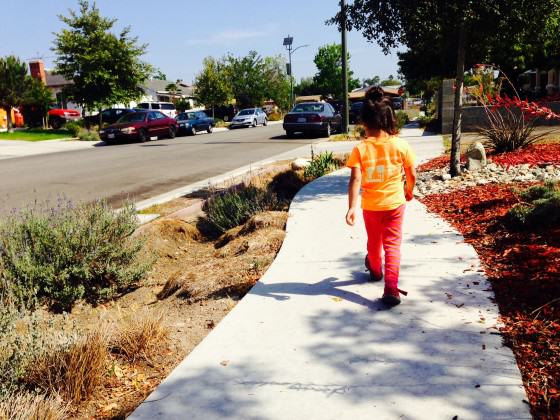
About the Writer:
Pepe Marcos-Iga
Jose “Pepe” Marcos-Iga, PhD, is an environmental educator that helps other educators become more effective, by providing the networking and capacity building tools they need.
Pepe Marcos-Iga
No. Urban Environmental Education (EE) is nothing new. It’s been around since the beginning of the field. What’s new is this growing wave of community led efforts that in one way or another amount to urban EE, even if being called something else. Some of these efforts sparked from seeds planted a long time ago by larger organizations, others from the willingness of community members to make a difference in their neighborhoods. But what they all have in common is the need to create more resilience in these growing urban communities, as more and more rural populations move into urban areas around the world.
It is important to acknowledge the work done by organizations and individuals that build up to the current wave of urban EE, just like when doing science, we are building on the body of knowledge and moving an issue forward, the shape and form of today’s urban EE movement is the result of the combination of many factors. We must stop asking if urban EE is a new thing, it is not productive to measure the value of any practice by how innovative it is, we have to stop claiming it has been done before (or it’s never been done before).
Instead, let’s measure the value of an urban EE experience by asking questions such as:
•Is it relevant to the people who participate?
•Is it effective in generating resilient communities?
•Does it emerge from/with the needs and concerns of the communities it serves in mind?
•Are all the voices in the community being heard?
•Does it provide connections to the natural world within and without the urban area?
•Does it increase the environmental literacy, stewardship and civic engagement of the participants?
I could keep going. And you could probably generate a very different list.
In essence, urban EE is environmental education that takes place in an urban area. I state the obvious to make a point: What defines urban EE is the type of environment where it takes place. That’s it. Beyond that, any type of EE practice can qualify as urban EE. A zoo or museum program, a backyard habitat or edible community garden or one that takes place in an urban nature park. And yes, there is a tendency to associate urban EE with goals that address urban community issues, such as youth and community development or building green infrastructure, but this signals more to the needs and priorities of urban communities, and to the fact that effective EE has always incorporated the needs and priorities of the communities it serves, be it those of farming and fishing communities in a rural area or those of a violence stricken inner-city neighborhood.
So the type of urban EE described in this roundtable question does not describe a completely new version of EE, but simply a new manifestation of high quality EE (that reflects many of the standards set by the NAAEE’s Guidelines for Excellence). But there is a growing difference in the way many of these new practices are taking place. A certain humbleness in their approach, a certain willingness to collaborate, learn from others, establish new connections, step outside our comfort zone and acknowledge that we do not have all the answers and that the learning experience is not one that will be delivered by us the experts to you the learners, but one that will involve a more democratic approach to learning, were everyone is a learner and an educator. This is just one more manifestation of the field of EE evolving and continuing to be relevant to a constantly changing society.
About the Writer:
Candice Russell
Candice Russell is a girl gone green & passionate EE practitioner in Los Angeles, managing environmental education programs for TreePeople & CREEC.
Candice Russell
Urban environmental education is growing in scope and complexity. Summer camps, scouts, nature centers, natural history museums, and other similar programs have introduced young people to the natural world for generations. These programs have created an opportunity to learn about the environment which resulted in wonderful immersive experiences that for many of us were a part of childhood, a rite-of-passage, and simply a pleasant way to spend our time. In this way, youth development through urban environmental education is not new at all.
While programs designed to expose youth to nature still exist, in the minds of many, teaching young people about the environment has evolved from an enriching experience to a necessary intervention. We know that children spend less time outside than they did in the past — by some accounts as much as 50% less than they did 20 years ago. From Nature Deficit Disorder as described in Richard Louv’s book Last Child in the Woods, to the well-documented American childhood obesity epidemic, it’s clear that our children need nature and environmental education to enrich and repair lives increasingly spent indoors.
But just as we know that kids need nature, we’re learning that in many ways nature needs them too. Educating students about issues of increasing environmental urgency such as climate change, and the desire to grow an environmentally literate society has escalated youth development through environmental education from wonderful opportunity to a critical emergency response.
TreePeople, an environmental non-profit in Los Angeles celebrating its 40th anniversary of planting and caring for trees and educating the students of Los Angeles in fact exists because an urban kid got out of the city and into nature. Our President and Founder Andy Lipkis was a 15 year old summer camper in the San Bernardino Mountains near Los Angeles when he was inspired to plant and care for trees, an action that later lead to him founding TreePeople as a teenager. Every time we plant a tree at TreePeople the Citizen Foresters and volunteers gather around and together say, “Trees need people, people need trees,” as part of the naming ceremony. This is because in cities trees face many threats, from high carbon emissions to flying soccer balls and need us to care for them until they are well established. Helping young people understand that their continued action is necessary for the survival of the trees they’ve planted is an important part of our work. The truth is that our youth can no longer afford to have a “Giving Tree” relationship with nature. They must recognize what they have to give as well. Our youth will be called upon to solve the critical environmental issues of our time, and will bear the burden if they can not and will not understand what’s at stake. It is the urgency surrounding the movement to couple traditional experiential education with a deeper understanding of environmental problems and solutions that is new. And it is necessary to help our students understand all that nature has to give, and all they will be asked to give in return. Trees need people, and people need trees.
About the Writer:
Soul Shava
Dr Soul Shava is an environment and sustainability education specialist.
Soul Shava
Urban environments, as transformed landscapes, appear not be ideal contexts for environmental education. However, these possibilities have been explored by urban communities in their efforts to make such environment conducive for their livelihoods. I remember these efforts from growing up in the cities in Zimbabwe. because my father was a railway worker, we moved around cities and resided in several townships among other migrant workers from all over southern Africa, particularly from Malawi, Mozambique, Zambia and from within Zimbabwe. As I recall from our stay in Victoria Falls and later in Bulawayo, we grew up experiencing a myriad of cultural activities, including initiation ceremonies, dance festivities, weddings and funerals of the Kalanga, Lozi, Lubale, Ndebele, Nyanja/Chewa, Quilimane, Shangaan, Shona, Sotho, Tonga and Venda peoples among whom we stayed.
Backyard gardening was a common practice among all cultures, where the emphasis was mainly on providing food to supplement the household incomes and to provide food plants that would not be normally found in the modern shops. As we grew up we sampled various traditional cuisines from the homes of friends and neighbours and grew to associate the food crops in people’s backyard gardens with their cultures, even though there was also much sharing of gardening plants and recipes. We sampled dishes of mufarinya (pounded cassava leaves) and fish from family friends and neighbours from central Africa (Malawi and Zambia), muboora (pumpkin leaves) and nhopi (made from pumpkin and peanut butter) from the Shona, madhumbe (yam — Calocasia esculenta) from the Manyika in Eastern Zimbabwe, umxanxa (butternut and sour milk) from the Ndebele. Other crops that people grew included sweet potatoes, round nuts (Voandzea subterranea), mealies (Zea mays), pumpkins, water melons, spiny cucumbers (Cucumis metutliferus), water melon (Cucumis melo),
Most community members also kept small livestock such as chickens, rabbits and guinea pigs for food. These were reared in backyard cages. As boys we used to go and collect grass and leaves for rabbits and guinea pigs from the wild veld of known plants that were edible to them and would not poison them.
The city was a place where people could lose their identity and origins and blend into the uniformity of modern consumer life. However, despite their urban location and constraints of city life, most of the indigenous communities were still able to sustain their traditional cultural practices in the city, maintain the link with their origins. This is form of urban Indigeneity that is seen to permeate urban spaces today, supported by gardening spaces created by local communities. The knowledge of gardening and livestock rearing was passed down the generations, sustaining these cultural practices.
Urban environmental education should highlight and promote community driven environmental sustainability practices (such as urban gardening and small livestock rearing) taking into consideration their contribution to maintaining diverse local cultures.
About the Writer:
Philip Silva
Philip's work focuses on informal adult learning and participatory action research in social-ecological systems. He is dedicated to exploring nature in all of its urban expressions.
Phillip Silva
Is urban environmental education really anything new?
This question only matters to people who get paid to put concepts in different boxes (researchers) and people who get paid for their purported prescience on “real world” issues (consultants). Is it old? Is it new? Did I name it first, or did you? I am both a researcher and a consultant—but I am also a teacher and a learner. This is a dead-end area of inquiry because it does little to advance actual teaching or learning and distracts us with quibbles over creation myths. Let’s move on.
What should its goals and practices look like?
The goal of any learning experience should be transformation. The Brazilian educator and activist Paulo Freire argued that teachers and students must share the power to define that change — to set goals for teaching and learning together in response to a specific issue of immediate concern. Urban EE, done right, listens before it leaps into action. It aims to grow a new generation of community gardeners in the East New York neighborhood of Brooklyn to change the local economics of food access. It aims to empower a constituency of voters savvy in the science of wetland restoration along the levees of New Orleans to prevent future floods.
If there is one single universal goal in urban EE, it should be this: avoiding, as much as possible, the imposition of universal goals. Keep the learning local.
Urban environmental educators need access to training opportunities, mentorships, and coaching. They need help thinking critically about their craft. They need to develop skills as facilitators, storytellers, and explorers. They need to practice a form of teaching that is more than just telling.
The urban EE world worked itself into a lather last year when Toys R Us aired an impish T.V. commercial based on the premise that underprivileged kids enjoy running amok through a toy store more than sitting through another ho-hum “can you guess what kind of tree this is?” field trip in a forest. The ad took an admittedly cynical view of environmental education, and shamey shame shame on Toys R Us for its antisocial hijinks. How very disappointing.
But now that we’ve all taken turns putting the Big Giraffe in a “time out,” maybe we can afford a little introspection. What was it about this ad, aside from its cynicism, that hit such a raw nerve? It isn’t all that difficult to imagine a real-life “Ranger Brad” struggling through a boring lesson built on the half-baked idea that kids should be able to name trees they’ve never heard of. I’ve personally seen this exact approach to environmental education happen more times than I care to remember. It’s bad pedagogy, and it comes from too little training for the legion of young educators working in underfunded non-profits throughout cities in the U.S.
Kids love toys. So do many adults. Toys are tools for imaginative storytelling. They give us tactile ways to knit narratives in real-time. They satisfy what Morse Peckham called humanity’s “rage for chaos” —for safe spaces to break rules and tinker with reality. Toys have always played into childhood explorations of nature, and archaeologists in the future will puzzle at the thousands of action figures and doll heads they discover buried in creek mud and encased in petrified logs.
Urban environmental educators need to set aside their Sand County Almanac and pick up books like Jonathan Lethem’s Fortress of Solitude or Junot Diaz’s Drown to start finding compelling stories about toys and playtime in an actual urban environment. What other stories should we pull down from the shelf?
Shubhalaxmi Vaylure
Being an environmental educator at BNHS’s Conservation Education Centre all my life in Mumbai, urban biodiversity was my all time favourite topic. While many urban educators felt that environment education should be imparted to rural areas, I differed in believing rural India’s carbon footprint was much smaller than the urban India. Moreover I found rural people were still connected with their immediate environment unlike the city borne people who had severed their natural connection. However I always struggled to seek funds for programmes or projects that were linked with urban environment education, somehow it didn’t appeal the funders who probably wanted me to have the rural component. Nevertheless I kept my belief intact and worked on urban environmental educational modules targeting schools, colleges, families and corporations.
My first initiative
I initiated citizen science programmes under a catchy title — Be a Scientist for a Day. The programme encouraged participation of local people in the monthly biodiversity survey carried out at BNHS Nature Reserve. This programme largely attracted a wide range of audiences however participation by youth between 14-25 years was higher. The students benefitted by learning the research methodologies through hands on training and earned extra credits. The programme succeeded in infusing interest among amateurs for field research. The uniqueness of the programme could be one reason it was covered repeated in print media including cover stories.
My efforts were however strengthened when attended the Conference of Parties (COP 10) in 2012 wherein I presented the findings of Be a Scientist for Day programme in the Communication Education for Public Awareness (CEPA) section. The idea was well received as urban biodiversity was one of the core areas COP11 identified. Since then I started developing citizen science projects and programmes focussing urban ecosystems however it was difficult to get the funding.
My latest endeavour
In my latest attempt, I developed a concept of developing mobile apps based on Audubon eguides model for study of urban trees, birds and butterflies in four metros of India. With help of the mobile apps, a citizen science programme will be launched in 10 schools of each metro. The students will send data on local sightings using the mobile app. This will be part of their project work. The data collected across the metros will be used to compare population trends. This programme will address John Louv of ‘Last Child in the Woods’ concern that children prefer to spend time with their gadgets instead of going outdoors. This programme will make a better use of the smartphone and drive children outdoor to observe nature.
So if you ask me whether urban environment education should be aimed at youth or children, I would say families. It’s important make environment study a family hobby so that the impact is greater.
Urban environmental education in India
First of all urban environmental education as a term is still unheard in cities atleast in India, secondly awareness about urban biodiversity is still in its nascent state. Nevertheless environment education has been happening in formal or informal manner in cities, the term is new. After Hyderabad the first Indian city to develop City Biodiversity Index has inspired other cities to follow the trend. The State Biodiversity Boards have now made it mandatory to the city municipal councils to develop People’s Biodiversity Register (PBR). This ambitious initiative of government hasn’t seen the day light yet. This could be possible if citizen science approach is used wherein city people are involved in documentation of their own local flora and fauna.
Therefore the primary goal of urban environment education would be to create awareness about local environment. It is a common notion in my country that nature study is best done in forests and cities are just concrete jungle with no life. It is therefore important to glamourize local environment by highlighting the unique flora and fauna found therein. Then identifying the flagship species as well as the indicator species which could be represented as species of healthy environments. Such positioning always appeals city people who are exposed to constant commercial advertising. The target groups should include children, youth families and corporate employees. Educational resources need to be developed and disseminated. Corporate employees could also be engaged in study of their local environment as part of the Corporate Social Responsibility, this could be on medium of funding such local initiatives. Print and social media plays an important role as far as awareness is concerned, thus usage of newspaper articles, blogs and posts on Facebook and tweets on Twitter will be best medium to bring communities together for a common cause. At the end, I would summarize that the best approach for urban environment education will be to use lifestyle technology of urbanites and influence them.

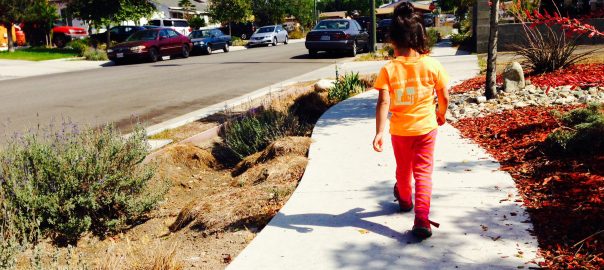


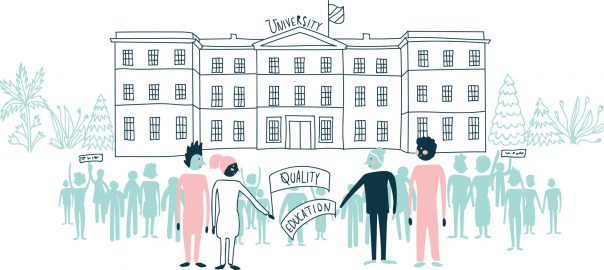
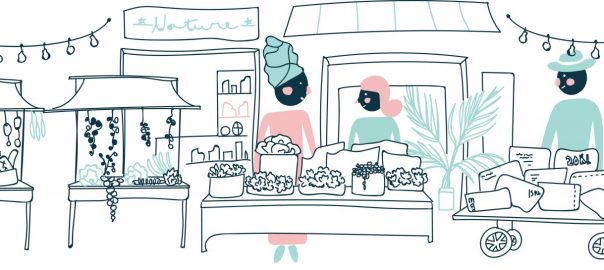
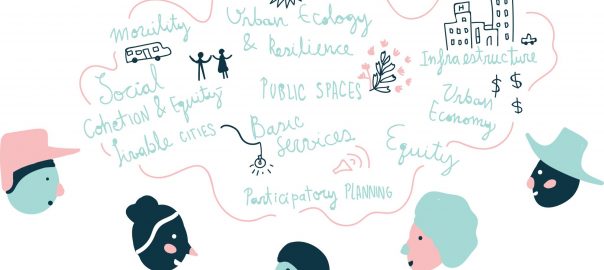
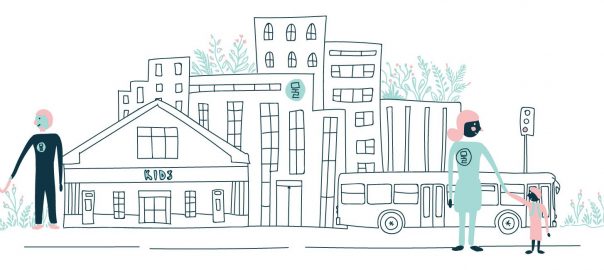
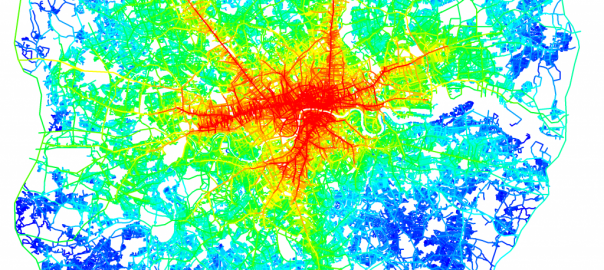
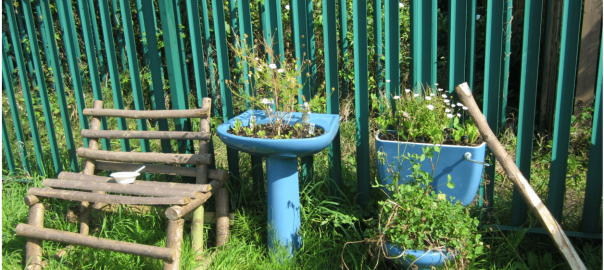
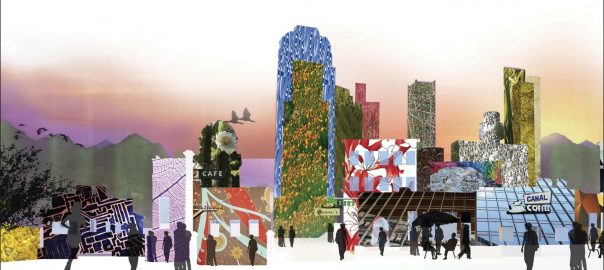
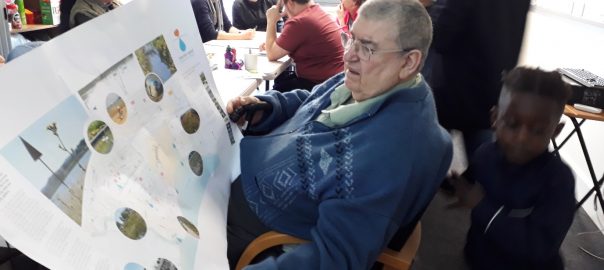
Bangladesh have different ways and streams education system and still there is no one-way system yet been done. This problem creates difficulties to establish an efficient education plan in the country. There are three types of institutions in the education system of Bangladesh: government institutions, semi-government institutions, private institutions. Under the three types of education there are three kinds of institutions; general school education, madrasah education and vocational education till university level. Under the three kinds of education there are two medium of education one is Bengali medium and another is English medium education. Most of the schools follow the Bengali Medium Education System though there are a few public schools that follow English Medium, mainly in the big cities. Most English Medium schools are private. In the madrasah education there are mainly three streams like Alia madrasah, Qawmi madrasah, and Maktab/Nourani, Furqania/Hafizia madrasahs. In the school education system where students are follow the Bangladesh Secondary and Higher Secondary School Education Board curriculum except English medium schools. On the other side, in the madrasah education system, students follow the Bangladesh Madrasah Education Board curriculum. So, the environmental education program implementation is still at its infancy in various guises education system naturally.
I think the focus in individual or community action depends on the level of community cohesion. In instances where there is a greater sense of community, community efforts are easier to drive. However, were there is less of this, individual efforts can indeed spark interest in others resulting in domino effect, especially when the economic value of environmentally friendly practices is realized. .
Thanks Candice
It is interesting to learn of a similar trend on urban gardening. in Los Angeles I think contributes significantly to creating a sense of place/belonging by reviving people’s culinary cultures while simultaneously creating an opportunity for self-sufficiency or food sovereignty for these local communities.
Hi Marianne
I have noted that several schools in South Africa are embarking on school greening using indigenous plants. In order to make the gardens more meaningful, a number of them are growing the plants along themes such as food plants and medicinal plants. The traditional knowledge of the plant names and their varied uses is derived from the elderly members of the community who are sometimes called in to demonstrate their uses and preparations.
Dear Marianne
I have noticed a lot of people that move into towns growing several of their own edible traditional crops. However, I have seen very little in terms of growing indigenous trees. This might be due to that they take too long to grow resulting in lack of patience on the part of the urban immigrants ( some of the seeds take a long time to germinate and it might be years before they produce any yield) or expertise on propagating them. However, interestingly, gardening and landscaping using indigenous plants is becoming a popular trend among the middle and high income urban population in southern Africa. It will be interesting to investigate if a similar trend is notable in other regions across the globe.
It seems the vision described by Janice and the varied urban EE practices and connection of urban EE to governance described by Alex Kudryavtsev paint a very different picture of EE than one we often envision. One question that I am thinking a lot about is the role of individual action in city-wide transformation. I heard an interesting talk by Keya Chatterjee of the World Wildlife Fund this week arguing for the importance of individual behaviors–but that we should try to find positive value (fun/rewards) in such behaviors and make them highly visible so as to influence others. The example she gave is going solar, which because it’s visible encouragse others to do the same, lowering the price of solar and increasing the price of conventional fuels, thus leading to more people going solar, in a positive feedback loop. Chatterjee feels as if the transformation is already taking place. But I have heard others argue that EE should focus on collective rather than individual action.
Dear Soul and Candice,
thanks for sharing your thoughts about different types of knowledge being applied in urban gardening–and in urban tree planting–I would be interested in learning more about rural migrants and immigrants to cities and tree planting. Have you used this tree planting and gardening knowledge of elders in your urban EE programs? Another way to look at this is through the lens of social-ecological memories–the work of Stephan Barthel and Keith Tidball is interesting here.
I really appreciate that Miguel Luna brought up the issue of how the city itself educates us. The landscape that surrounds us sends one of the strongest messages of all about how the world is and how we should be in it. As Miguel says, the opportunity is there to shape the way children (and presumably older people as well) see and interact with cities. This is an exciting challenge for planners and citizens alike–given that citizens are increasingly appropriating and transforming urban space. So not only do we learn by doing when we engage in transformative action but we also create places that teach others.
Thank you for these suggestions, Marianne!
And I forgot to say that I agree that we seem to be touching on similar themes. I love that you quoted Freire. I had a quote from him that I wanted to include but ran out of space, so I am glad you brought him up.
Thanks Philip, I agree with you that we need to do more emphasis on the “urban” part of urban EE. I think, again that the same would apply if we were doing wetland EE in rural areas in Mexico, we would need to focus more on the issues around wetlands, the uses the communities give to them and other issues they face. So to clarify, when I say that Urban EE is EE that takes place in cities, I don’t mean we can simply transplant the same EE programs we use in other settings to an Urban setting, but that the essential underpinnings of EE are the same, and one of those underpinnings is the importance of where one lives. So I would argue that a tool like Akiima’s Community EE Wheel could be also very useful in that wetland community in rural Mexico where people connect their livelihood to their environment, the difference is that we would have to populate boxes for community wellness with what talks to the needs and issues of those rural communities.
Fascinating perspective Dr. Shava. “Urban environmental education should highlight and promote community driven environmental sustainability practices (such as urban gardening and small livestock rearing) taking into consideration their contribution to maintaining diverse local cultures.” This is of special interest to us here in Los Angeles as more people take up urban farming, edible landscaping in their own yards and parkways, and because of our diversity here. When visiting the homes of some of our Citizen Foresters it’s clear that there is a level of land-use expertise learned in their countries of origin that many of us are only beginning to understand and the value of which is being slowly realized. Thank you for sharing this.
With 76% of ice free land mass altered by humans for settlement or agricultural purposes, and the high rate of urban growth, I think that ALL Environmental Education should include components about urban ecosystems.
Unfortunately, like Philip and other mention, socio-ecolgical systems are often more complex to understand than natural ecosystems becasue there are so many scales of complexity, aside from the environmental aspects. Urban EE needs to begin with children, as young as possible, and maintain a SUSTAINED involvement through adolescence. Teaching should focus on developing systems thinking, a goal established by United Nation Decade on Education for Sustainable Development. By teaching a combination of natural history, outside of urban areas, and urban ecology, inside and adjacent to urban areas, students can develop scale acuity, a critical component of systems thinking.
Like Philip mentioned, many environmental educators still rely on into fact-telling, however, I don’t believe it is their fault. Learning the complexities of the Urban Ecosystem takes A LOT of time, and requires you to have a very broad knowledge base. From my experience, EE educators often don’t hold graduate degrees (though this is far from a necessity), and don’t have time to pour over the Urban socio-ecological literature. So, I’m not sure simply trying to train Environmental educators is the best method. Like Candice suggested, of TreePeople, perhaps we needs to grow them.
Ellis, E. C., K. Klein Goldewijk, S. Siebert, D. Lightman, and N. Ramankutty. 2010. Anthropogenic transformation of the biomes, 1700 to 2000. Global Ecology and Biogeography 19:589-606.
The trend towards urbanisation is ever increasing, more so in southern Africa where cities provide opportunities for the youth in terms of education and employment. Rural to urban migration is on the increase. However, the culture of self sustenance through growing one’s own food and the value of sustaining traditional cuisine among the youth in the current era is less promising. I was discussing with an Indian colleague about how difficult it was to get traditional foods in the local markets in the city. Surprising it turned out that we had similar interests and were both cultivating small backyard food gardens. The outcome of this conversation was that we are now sharing seeds and produce. However, will such a culture be transferred into the next urban generation?
I appreciate the spirit and the content of Pepe’s contribution to the conversation, and at the risk of being presumptuous I’d suggest that we’re both touching on some similar themes.
Pepe, I do wonder whether we need to do more work emphasizing the “urban” part of “urban environmental education.” I like the parsimony of your definition—urban EE is just EE done in cities—but I would also make the case that we need to start thinking about urban studies—planning, policy, geography, etc.—when we think about urban EE. We’ve got the environmental content fairly well figured out. But where is the urban? I’m an urban planner and policy analyst by training, so I can’t help wanting to see more content from that realm in urban EE curricula.
To that end, I really appreciate the work that Akiima Price has been doing in recent years with the Community EE wheel: http://communityee.net/category/try/
Thanks, Marianne, for your insights here. You may be interested in some of the comments I made in David’s thread below.
I lean heavily on the work of Jane Vella and her associates when it comes to evaluating the outcomes of informal learning. Vella co-wrote a solid guide to learning evaluation titled HOW DO THEY KNOW THEY KNOW. I’d recommend it to anyone asking questions about the relationship between individual learning and longer-term societal change.
Vella, along with Paula Berardinelli and Jim Burrow, wrote of three phases of change: learning (the change that happens in a workshop, training, classrooms, etc.), transfer (the change that happens in the immediate community, family, or workplace of the learner), and impact (the change that happens in the wider world).
There’s nothing particularly groundbreaking about this approach. Anyone who has ever developed a logic model for a grant proposal will be familiar with the concept of phases of impact over time. Yet I keep coming back to this simple framework when I work with adult learners to identify and measure changes that come out of new learning experiences.
The first phase asks us to look for evidence of learning within an actual workshop or training. “Learning” is an abstract verb. You can’t actually watch learning happen in real time. However, you can work with more concrete verbs that are observable and, sometimes, even measurable when crafting goals for a learning experience. Making, crafting, performing, mapping, debating, drawing, writing—these are all verbs with concrete outcomes that can serve as proof that the learner has sufficiently grappled with some new skill or concept or attitude to make it their own. Again, this isn’t revolutionary stuff. Benjamin Bloom’s Taxonomy of Verbs is a great primer for anyone who wants to learn more.
The second phase asks us to look for evidence that the learner transferred a new skill, concept, or attitude into a daily routine or work practice. Vella suggests that phrasing our hopes and dreams for transference in the present tense can help us design learning experiences that actually hit the mark. For example: “As a result of our tomato gardening workshop, participants ARE harvesting large numbers of tomatoes every season using some basic concepts from permaculture.” An educator should be able to work backward from such a concrete statement to design a tomato gardening workshop that, by hook or crook, enables gardeners to meet their goals. Participants can use simple metrics and reply to simple surveys to develop data about what happens when they transfer their newfound skills and knowledge into their daily routines. Educators should be prepared to work with participants for months after a learning experience to coach them through that data collection process.
The last phase asks us to look for the impacts of transference over time. I think this phase welcomes a more academic, hypothesis-driven approach to measurement—if only because multi-year assessments can be costly and require a deep commitment to the research.
This is a very quick and dirty overview of the approach to evaluation that comes out of Jane Vella’s framework for Dialogue Education. Anyone interested in learning more should also look at the work of Malcolm Knowles in informal adult learning and the concept of “Fourth Generation Evaluation” developed by the qualitative researchers Egon Guba and Yvonna Lincoln.
Brian Johnson, now at the Wildlife Conservation Society, wrote his Antioch University dissertation on measuring environmental outcomes of EE. His work may be helpful in addressing the question of measuring these outcomes.
http://aura.antioch.edu/cgi/viewcontent.cgi?article=1055&context=etds
Also Stephen Sterling from the UK has written about transformations at the individual and social-ecosystem systems level in his article about the resilient learner. DOI:10.1080/13504622.2010.505427
I was really interested to see many common threads about how urban EE integrates social and environmental issues, often focusing on restoration, appeared across the different countries and writers represented. Also things emphasized by different writers may be useful to transfer across continents–like Soul Shava’s writing about the knowledge of rural migrants to cities being used in urban EE.
Janet Astbury asked about approaches. Some great places to start are Akiima Price’s Urban EE Collective on Facebook and emerging Community EE Guidelines, Alex Kudryavtsev’s Urban EE online Professional Learning Community, previous Urban EE online courses, and urban EE web resources, plus other resources and networks offered through EECapacity (www.eecapacity.net).
Pepe, I’m glad you brought up the notion of how to measure aspects of the transformations environmental educators aspire to. It is something I’ve spoken a lot about with fellow respondent Phil Silva. When we think about the impact that we’d like to have with urban environmental education…how can we define that impact in a way that is measurable? And then actually measure it so we can adapt our methods for improved success. Sure, we can measure how the individual students are changed (i.e., what they learned, changed attitudes, etc.), but for the larger societal goals we aspire to in urban environmental education, how can we measure change and progress?
I agree with this evolution view, but I think that the transformation of the student had implicit the collective transformation of the community, an assumption that not always was true. By making the transformation of the community explicit in their goals, educators will be more prone to measure it. So the change is philosophical in nature and goes beyond the educational realm into all aspects of society, and it is one that moves away from pure individualism into a more gray area in the Individualism-Collectivism spectrum.
The word “transformation” comes up several times in the responses (e.g., in Janice’s and Phil’s). Traditionally we generally have viewed education as transforming the student. But in these cases we talk about transforming the students on a path to directly transforming the urban social-ecology: for gardens, storm water capture, community building. This seems like a key philosophical evolution — environmental education that is not purely observational, but rather is a full participant in the transformation and improvement of the built environment of cities.